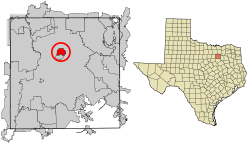University Park, Texas
USGenWeb >> TXGenWeb >> Dallas County >> Towns & Communities >> University Park, Texas
 |
|
| Latitude | 32° 50' 58" N 32.849444 |
| Longitude | 96° 47' 31" W -96.791944 |
| Elevation feet/meters |
548/167 |
| Zip Code | 75205 & 75225 |
| Founded | |
| GNIS FID | 1377191 |
| TXGenWeb Site | |
| Cemeteries | |
| University Park Public Library | |
| Local Genealogy Society | |
| Highland Park ISD | |
| Wikipedia | |
| uptexas.org | |
|
|||||||||||||||||||||||||||||||||
University Park began as a cluster of homes surrounding the fledgling Southern Methodist University, which was founded in the then-rural Dallas County in 1915. The university supplied these homes with utility service until 1924, when the growing population could no longer be supported by the school's utilities. In response, the area's homeowners first sought annexation into the town of Highland Park, but were refused due to the high cost that would have been required to provide the necessary utility and safety services. Shortly thereafter, Dallas also refused a request for annexation on similar grounds.
Community leaders organized to incorporate as a separate individual city. According to state law, incorporation required that area residents hold an election on the issue before the new city could be officially formed and recognized. On April 24, 1924, voters approved the measure by a 5:1 margin. Operating under the commission form of government, the city began the work of shaping the new government and addressing the pressing need to establish basic municipal services. To provide for the financial needs of the city, another election was held soon thereafter to authorize the issuance of municipal bonds. Passing by a near unanimous margin, the $150,000 bond issue funded the installation of a new water supply system, street paving, and the construction of a new city hall and fire station. When first incorporated, the city encompassed 515 acres (2.08 km2), 380 homes, and 1200 residents.
.... Read More Wikipedia ....
Lisa C. Maxwell
University Park is on Dallas North Tollway, U.S. Highway 75, and Loop 12 five miles north of downtown Dallas in central Dallas County, bordered by the city of Dallas on the north and east and Highland Park to the south. Its name originated because of its location adjacent to Southern Methodist University. SMU officially opened in 1915, and homes were built around the campus to house teachers and staff of the university. Water for the campus came from artesian wells and an overhead storage tank, and sewage lines were connected to Dallas's lines in Oak Lawn. Homes in the area were joined to the university water and sewer lines, and homeowners paid the university for these services. By 1924, with more than 380 homes in the area, the university could no longer afford to supply water and sewer lines to residential areas. The cities of Dallas and Highland Park refused to annex the University Park area because of the financial burden of laying new sewer lines and supplying garbage removal and police and fire protection. Therefore, in 1924 the city of University Park was incorporated with a population of 1,200. The first city government consisted of a mayor and five aldermen, but on April 6, 1926, residents voted to adopt a commission form of city government, which the city still retained in 1992. On August 16, 1924, a $150,000 bond election was held to set up fire protection and to finance water and street improvements. The town organized its own garbage-disposal system in 1925. Snider Plaza, a popular shopping center, opened in 1927, although it remained largely undeveloped throughout the Great Depression. The population of University Park grew rapidly, mirroring the growth of Southern Methodist University and the nearby cities of Dallas and Highland Park. By 1945 University Park had an estimated population of 18,000 and 120 businesses. In that year the city of Dallas attempted to annex the cities of Highland Park and University Park, commonly referred to as the Park Cities, but was turned down by a narrow margin. After their refusal of a merger, Dallas used its home rule powers to annex territory adjacent to University Park, cutting off all land for expansion. University Park still relied on the city of Dallas for such services as water and sewage treatment, but in 1947 the Park Cities set up their own Water Control and Improvement District to take over these functions. A water-purification plant, reservoir, and pressure tank were completed in 1950. Because it was surrounded by Dallas, University Park was prevented from annexing land for growth as most communities in Dallas County did, and its area remained 3.7 square miles. Few lots were left vacant on which to build new homes. The population rose from 4,200 in 1930 to 14,458 in 1940 and 23,823 in 1950. Between 1950 and 1990 it fluctuated moderately, reaching an estimated 28,500 in 1956. In that year University Park had eleven churches and seven parks. Its schools formed part of the Highland Park school system, an arrangement still in effect in 1992. The 1990 population of 22,259 was primarily white, 3 percent Hispanic, and 1 percent black. The university remained the largest employer, and businesses continued to be primarily university or student related.
Bibliography: Diane Galloway and Kathy Matthews, The Park Cities: A Walker's Guide and Brief History (Dallas: Southern Methodist University Press, 1988). Ralph E. Hamman, The Story of the City of University Park (Dallas: City of University Park, 1957; rev. eds., 1962, 1967). Vertical Files, Dolph Briscoe Center for American History, University of Texas at Austin.
Handbook of Texas Online, Lisa C. Maxwell, “University Park, TX”




